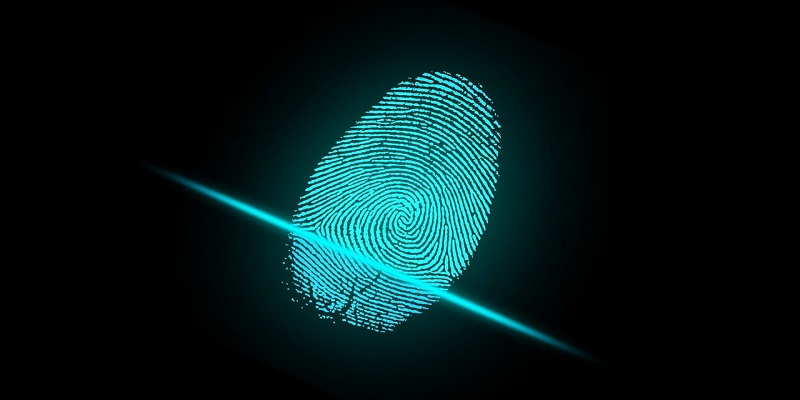Security is paramount. As cyber threats evolve and become more sophisticated, traditional methods of authentication, like passwords and PINs, are increasingly seen as vulnerable. As a result, the need for more secure, reliable, and user-friendly authentication methods has grown. Innovations in secure authentication, such as biometrics and advanced techniques, are leading the way in protecting sensitive data.
The Importance of Secure Authentication
Authentication is the process of verifying a user’s identity before granting access to systems or services. With the rise of online services, mobile applications, and digital transactions, secure authentication has become a crucial component of cybersecurity. Traditional methods like passwords have long been used to protect personal information, but they often fall short in providing robust security. Weak passwords, phishing attacks, and password theft are common vulnerabilities, making it essential to explore better alternatives.
As digital threats continue to rise, the focus has shifted toward more secure and sophisticated methods of authentication. The goal is not only to ensure a high level of security but also to offer a seamless experience for users. Innovations like biometrics, multi-factor authentication (MFA), and behavioral analytics are reshaping how we think about digital security.
Biometrics: A Game Changer in Authentication
One of the most promising solutions for secure authentication. Biometrics involves the use of unique physical or behavioral characteristics to verify identity. These characteristics include fingerprints, facial recognition, iris scans, voice recognition, and even behavioral traits like typing patterns or walking gait. Unlike passwords, biometrics are difficult to replicate, offering a higher level of security.
Types of Biometric Authentication
Fingerprint Recognition
Fingerprint recognition is one of the most widely used biometric authentication methods. It works by analyzing the unique ridges and valleys of a person’s fingerprint. With the advent of smartphones, fingerprint scanners have become standard, allowing users to unlock their devices or approve transactions quickly and securely. However, while effective, fingerprint authentication can be vulnerable to high-quality fake fingerprints or advanced hacking techniques.
Facial Recognition
Facial recognition technology is gaining momentum, especially with the proliferation of smartphones equipped with front-facing cameras. This method analyzes facial features, including the distance between the eyes, nose, and mouth, to create a unique template for each person. It is often used for device unlocking and access control in secure facilities. However, challenges like spoofing with photos or 3D masks have prompted further innovation to improve the accuracy and security of this technology.
Iris Scanning
Iris scanning is one of the most secure biometric authentication methods. The iris, the colored part of the eye, has unique patterns for each individual, making it extremely difficult to replicate. This method is typically used in high-security environments, such as government buildings or airports, where precise identification is crucial. However, iris scanning can be less convenient for everyday use due to its specialized hardware and the need for close proximity to the scanner.
Voice Recognition
Voice recognition technology has become more popular with the rise of virtual assistants like Siri and Alexa. This method uses a person’s unique vocal patterns, including pitch, tone, and accent, to authenticate identity. While convenient for hands-free authentication, voice recognition can be less reliable in noisy environments or if someone has a cold, which affects their voice.
The Advantages of Biometric Authentication
Biometric authentication offers several significant advantages. First, it is more user-friendly and efficient than traditional methods, such as passwords or PINs. It requires no memorization, making it easier for users to access their devices or accounts. Second, biometrics are highly secure because they are based on unique, personal characteristics that are difficult to replicate or steal. Third, biometric data is harder to forget or lose, reducing the risk of lockouts or password-related issues.
However, despite its many benefits, biometric authentication is not without its challenges. Privacy concerns surrounding the collection and storage of biometric data are prevalent, as well as the potential for misuse or unauthorized access to sensitive biometric information. Furthermore, while biometrics provide a higher level of security, they are not immune to hacking. Researchers have demonstrated ways to spoof biometric systems using high-quality images, videos, or other advanced techniques.
Multi-Factor Authentication (MFA): An Extra Layer of Security
Multi-factor authentication (MFA) is another innovation that enhances security by requiring users to provide multiple forms of identification before gaining access to a system or service. Instead of relying solely on passwords, MFA combines something the user knows (like a password), something the user has (like a smartphone or security token), and something the user is (like biometric data). This multi-layered approach makes it much harder for hackers to breach the system.
Common MFA Methods
SMS or Email Verification
A common MFA method involves sending a one-time code to the user’s mobile phone via SMS or email. The user must enter this code in addition to their password to gain access. While convenient, this method can be vulnerable to SIM swapping attacks, where hackers take control of a person’s phone number to intercept the verification code.
Authenticator Apps
Authenticator apps, such as Google Authenticator or Microsoft Authenticator, generate time-sensitive codes that are used in conjunction with a password. These apps provide more secure MFA than SMS, as they are not susceptible to SIM swapping. However, users must have access to their smartphones to use this method.
Hardware Tokens
Hardware tokens are physical devices that generate authentication codes. These tokens are typically used in highly secure environments, such as banking or corporate systems. They offer a higher level of security than software-based methods, but they can be inconvenient since users need to carry the token with them.
Push Notifications
Push notifications are another form of MFA that sends an approval request to the user’s device. The user can approve or deny the request with a simple tap, making this method fast and easy. However, push notifications rely on internet connectivity, which can be a limitation in certain situations.
The Future of Secure Authentication: What’s Beyond Biometrics?
While biometric authentication and MFA have proven effective, researchers and companies are looking beyond these methods to develop even more secure and convenient solutions. Emerging technologies such as behavioral biometrics, blockchain, and artificial intelligence (AI) are expected to play a key role in the future of authentication.
Behavioral Biometrics
Behavioral biometrics focuses on identifying users based on their unique behavioral patterns, such as how they type, swipe, or interact with devices. These behaviors are highly individualized, making them difficult to replicate or steal. This technology can continuously monitor a user’s behavior in real time, offering an additional layer of security beyond traditional methods. By analyzing subtle changes in user behavior, it can detect fraud or unauthorized access attempts without interrupting the user experience.
Blockchain and Decentralized Authentication
Blockchain technology is increasingly being explored as a means of decentralizing authentication. By using a distributed ledger, blockchain can store authentication data in a way that is tamper-proof and transparent. This can eliminate the risks associated with centralized databases, such as data breaches or identity theft. Decentralized authentication systems could allow users to control their own credentials and share them securely without relying on third-party providers.
AI-Powered Authentication
Artificial intelligence (AI) is another promising development in secure authentication. AI algorithms can analyze vast amounts of data, such as biometric patterns, user behavior, and contextual information, to authenticate users with greater accuracy. AI can also detect anomalies and potential threats, improving security by identifying unusual activity in real time. As AI technology continues to evolve, it has the potential to revolutionize the authentication process, making it more intelligent and adaptive.
Conclusion
Secure authentication methods are essential to protect personal and sensitive data. Innovations such as biometrics, multi-factor authentication, and behavioral analytics are leading the charge in improving security. Biometrics, in particular, is revolutionizing authentication by providing a more secure and convenient alternative to traditional passwords. However, as security needs evolve, so too will authentication methods. Emerging technologies like behavioral biometrics, blockchain, and AI are expected to shape the future of secure authentication, creating systems that are even more reliable, adaptive, and user-friendly. As we move toward a more digital world, the importance of secure authentication will only continue to grow.








